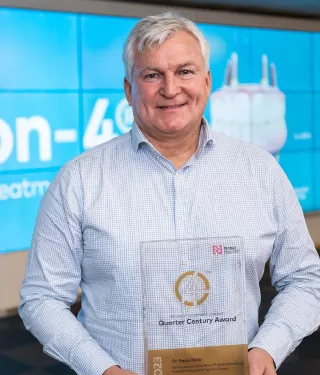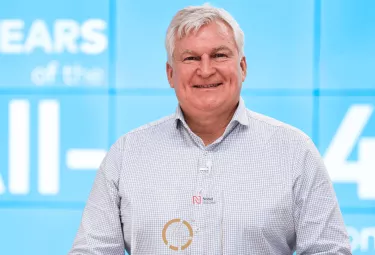
“I kept going because I knew this changed the lives of patients.”
The All-on-4® treatment concept is one of the most well-known techniques amongst practitioners and patients alike, for fixed full-arch restorations. First developed by Dr. Paulo Malo, we spoke with the inventor to discover more about the origins, inspirations, and challenges he faced when enabling this game-changing solution to transform the lives of hundreds of thousands lives over the past twenty-five years.
Dr. Malo, please tell us about the very start of developing the All-on-4® treatment concept.
Shortly after I graduated, around 1990, I had some cases where I felt I could do immediate loading on single teeth and small bridges, and I was surprised at that time by how good the results were. One hundred percent success in fact. I got in touch with Nobel Biocare – Nobelpharma at that time – and went to Gothenburg to meet their engineer Bo Rangert. He was very impressed and wanted to have the cases published in journals, but no editor was accepting them. People were thinking this was crazy, and that the survival rate was just luck. I then started full-arch cases with the Brånemark system of five parallel implants, and immediately loading them. This was when I had the idea that if I use only four implants and inclined the posterior ones, I could place them further back, even to the molar region. This could give better support to the bridge, especially for patients with little bone.
What was the main motivation for pursuing a tilted implant technique?
The development focused on the challenge of having patients, particularly elderly people, without sufficient bone in the posterior segments. This is because it was very difficult to reconstruct a fixed full-arch bridge in these cases without bone grafting. For elderly people, bone grafting does not have a very high success rate, and it complicates the treatment. I saw the All-on-4® treatment concept as the answer to this challenge.
Who were your first patients?
The very first patient during the development phase was a close friend. An elderly man in need of mandibular treatment. It was quite an experience. I remember perfectly, calling him every day to know if everything was OK. The first maxillary case was three years later, but even though I had already done dozens of cases with this technique in the mandible, I was much more nervous in the first maxilla case. Because of the anatomy and bone density, it was far more complex. With the first patients, we always told them that this treatment was new. But when we said the alternative is bone grafting, they immediately chose All-on-4®. It is the simplicity of the technique that makes it so great. We spent thirty minutes to an hour in surgery, placed the teeth a couple of hours later, and when patients saw it they just burst into tears. Some were the toughest of men, used to toughness in life, who you think never cried in their lives. As clinicians, without doubt, it gives you goosebumps.
You were clearly getting a great response from the patients. What about the dental industry?
It was not at all accepted. We faced a lot of problems, and people were calling us cheaters and cowboys. People said we couldn’t place just four implants or incline implants. I remember once we did a live surgery, and someone said that we must have cheated on the video because it was not possible to do it in thirty-five minutes. But it was not the opinions of dentists that I cared about; I kept going because I knew this changed the lives of patients. I did have some people that really supported me a lot, especially engineer Bo Rangert. He set up a meeting with P-I Brånemark to present my immediate loading cases; even though Brånemark disagreed with immediate loading, it was his view that people must accept it if scientific evidence exists and that it should be published. Scientific journals still would not accept my work, but with Brånemark’s intervention the cases were published in Nobel Biocare’s “Talk of the Times” magazine.
What was Nobel Biocare’s role in this story?
The success of the All-on-4® treatment concept would not have been possible without Nobel Biocare. You can come up with the best ideas, but if you cannot communicate them, they are of little worth. I had been knocking on the door of implant companies for a long time, and nobody was accepting it. When a new CEO took over at Nobel Biocare in 2001, Bo Rangert saw an opportunity so he arranged a meeting. I visited the CEO’s office to present the concept, she asked his opinion, and he explained the success he had been seeing for several years, and the benefits it brought to the patients – the simplicity, the Immediate Function, no bone grafting. Nobel Biocare agreed to take it on, despite the criticism, and we have worked together ever since. The surgical protocol has basically remained the same, but we have continued innovating the top-quality products to achieve the best results.
